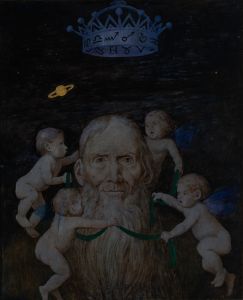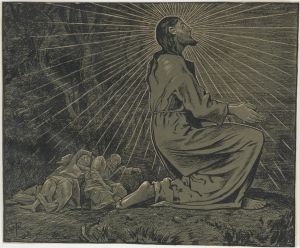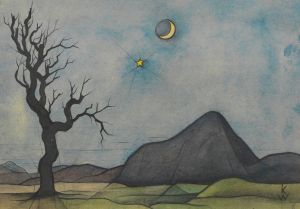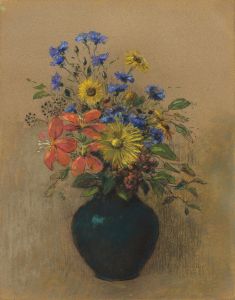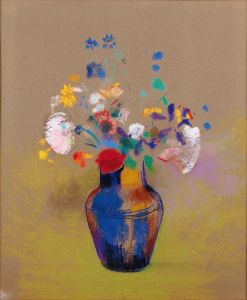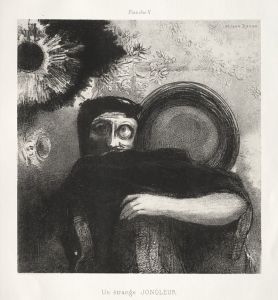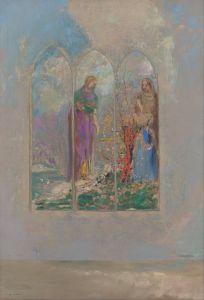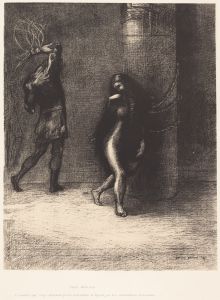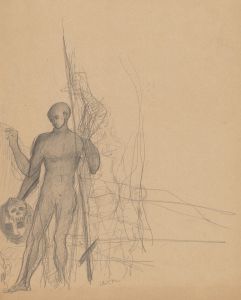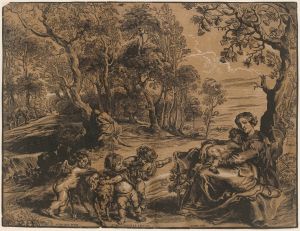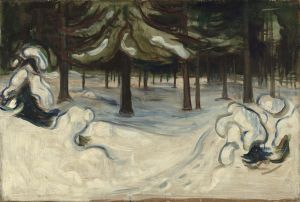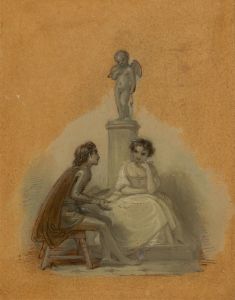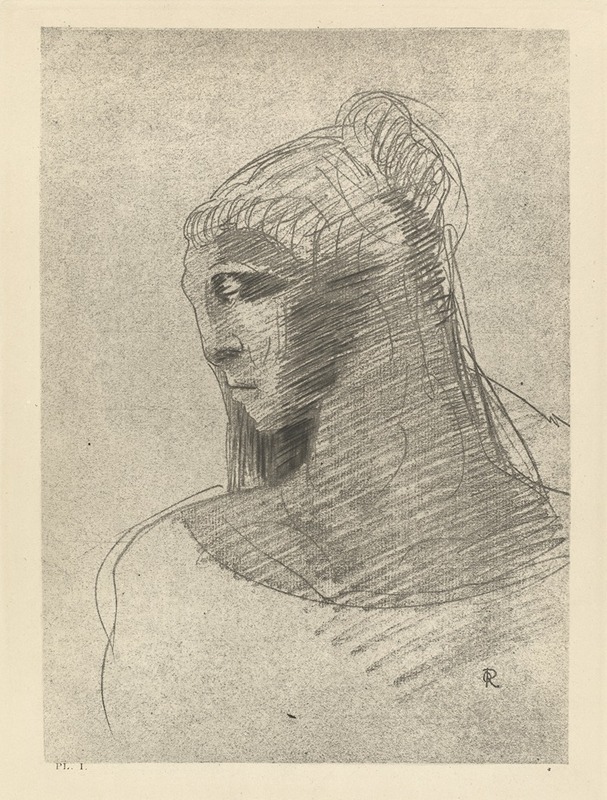
Je t’adore a l’egal de la voute nocturne. O vase de tristesse, o grande taciturne
A hand-painted replica of Odilon Redon’s masterpiece Je t’adore a l’egal de la voute nocturne. O vase de tristesse, o grande taciturne, meticulously crafted by professional artists to capture the true essence of the original. Each piece is created with museum-quality canvas and rare mineral pigments, carefully painted by experienced artists with delicate brushstrokes and rich, layered colors to perfectly recreate the texture of the original artwork. Unlike machine-printed reproductions, this hand-painted version brings the painting to life, infused with the artist’s emotions and skill in every stroke. Whether for personal collection or home decoration, it instantly elevates the artistic atmosphere of any space.
"Je t’adore a l’egal de la voute nocturne. O vase de tristesse, o grande taciturne" is a painting by the French symbolist artist Odilon Redon. Redon, born on April 20, 1840, in Bordeaux, France, is known for his unique and imaginative works that often explore themes of dreams, spirituality, and the subconscious. His art is characterized by a departure from realism, embracing instead a more fantastical and introspective approach.
The title of the painting, which translates to "I adore you as much as the nocturnal vault. O vase of sadness, o great taciturn one," suggests a deep emotional and poetic sentiment, typical of Redon's work. The painting itself is a reflection of the Symbolist movement, which sought to express the ineffable and the mysterious through art, often using symbolic imagery and themes.
Redon's artistic journey began with drawing and printmaking, and he did not start painting in earnest until later in his career. His early works were predominantly in black and white, using charcoal and lithography to create haunting and surreal images. It was only in the 1890s that he began to embrace color, which brought a new dimension to his work.
"Je t’adore a l’egal de la voute nocturne. O vase de tristesse, o grande taciturne" is an example of Redon's later use of color. The painting likely features his characteristic dreamlike quality, with ethereal figures and a sense of otherworldliness. Redon's use of color was often bold and expressive, contributing to the emotional impact of his works.
Redon's influence from literature and poetry is evident in the title of this painting. He was deeply inspired by the works of Edgar Allan Poe, Charles Baudelaire, and Stéphane Mallarmé, among others. These literary influences often imbued his art with a sense of melancholy and introspection, as well as a fascination with the mystical and the unknown.
Throughout his career, Redon was associated with the Symbolist movement, which emerged in the late 19th century as a reaction against the materialism and rationalism of the time. Symbolist artists sought to convey the deeper truths of human experience through symbolic and often enigmatic imagery. Redon's work fits well within this context, as he consistently explored themes of inner vision and the spiritual realm.
Redon's legacy is significant in the history of modern art. His imaginative and symbolic approach paved the way for later movements such as Surrealism, which also sought to explore the unconscious mind and the world of dreams. His work continues to be celebrated for its originality and emotional depth.
In summary, "Je t’adore a l’egal de la voute nocturne. O vase de tristesse, o grande taciturne" by Odilon Redon is a painting that encapsulates the artist's Symbolist style and his fascination with the mystical and the emotional. Through his use of color and symbolic imagery, Redon created a work that invites viewers to explore the depths of the human psyche and the mysteries of existence.





